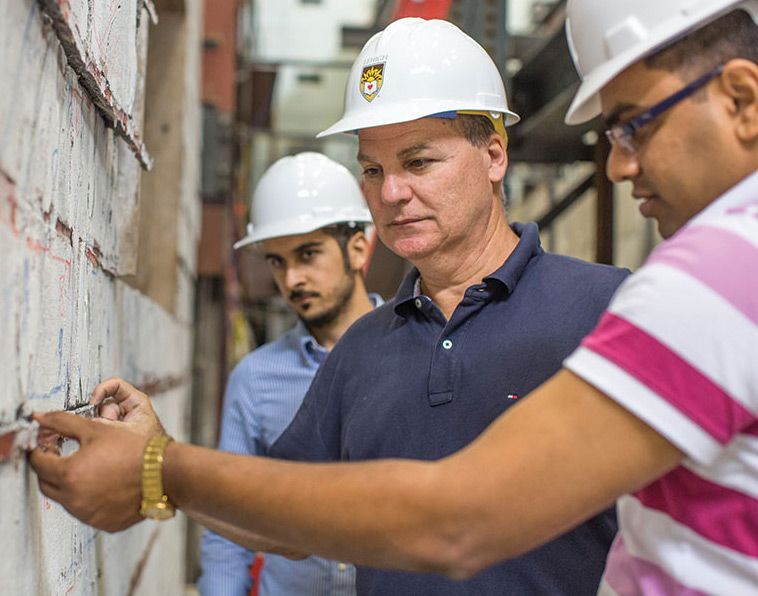Under leadership of James Ricles and Richard Sause, facility within ATLSS will continue to provide unique experimental resources and data management for study of effects of natural hazards on civil infrastructure
The National Science Foundation has awarded Lehigh a $5.3 million grant renewing the Natural Hazards Engineering Research Infrastructure (NHERI) Experimental Facility for another five years. The facility operates within Lehigh’s Advanced Technology for Large Structural Systems (ATLSS) Engineering Research Center within the Institute for Cyber Physical Infrastructure & Energy (I-CPIE). Preceded by Lehigh’s Network for Earthquake Engineering Simulation (NEES) RTMD facility, the NHERI facility was established in 2016 under funding from the NSF to help meet the grand challenge of community resilience to natural hazards.
The NHERI Lehigh EF will operate as an open-access facility under the leadership of PI James Ricles, Bruce G. Johnston Professor of Structural Engineering, and co-PI Richard Sause, Joseph T. Stuart Professor of Structural Engineering & I-CPIE director. The NHERI Lehigh EF provides access to unique experimental resources and data management for NSF-supported research and education awards. Researchers who use the facility have access to the experimental resources to perform accurate, large-scale simulations in multiple directions to study the effects of natural hazards on the civil infrastructure (e.g., the effects of soil-foundation structure interaction under wind and earthquake hazards).
Speaking to the NHERI Lehigh’s EF’s unique portfolio of equipment, instrumentation, infrastructure, and experimental simulation control protocols that does not exist elsewhere in the U.S., Ricles notes that the strength of the facility is accurate large-scale, multi-directional simulations of the effects of natural hazard events on infrastructure systems (e.g., buildings, coastal facilities). Ricles said the focus of the NHERI Lehigh EF will include large-scale, multi-directional, real-time hybrid simulations that combine physical experiments with computer-based simulations (a form of cyber-physical systems research) for evaluating the performance of systems subjected to natural hazards.
Reflecting on the role that the NHERI Lehigh EF will play in enabling researchers to develop transformative hazard mitigation strategies, Ricles comments: "As leaders in the development, implementation, and use of real-time hybrid simulation for large-scale laboratory testing, the facility will offer researchers unique advanced testing algorithms that utilize the portfolio of resources."
He adds: "The research performed at the Lehigh EF will increase our knowledge of the physical response characteristics, vulnerabilities, and factors that influence the resiliency of the civil infrastructure.”
Ricles also says that the large-scale real-time experiments performed at the facility will lead to the acquisition of rich data sets and creation of high-fidelity computational models for the purpose of performing advanced numerical simulations. Additionally, the research performed at the facility will enable the development of innovative materials and structural concepts in ways that are not possible without the NHERI Lehigh EF.
This story originally appeared on the I-CPIE website.


